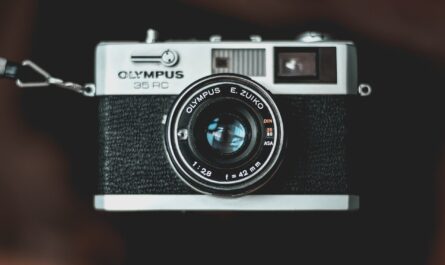This is the third in a series on using the internet as a learning device. You can read part one here, and part two here.
In the previous essay, we talked about finding resources online which would point you in the direction of quality sources of information. Many books, journalism, and websites, while certainly possible to be of high quality, are all written relatively recently. When you’re dealing with subject matter which is centuries or even thousands of years old, it becomes important to be able to trace your claims and information back to sources from the time in question, or as close to that time as possible. This assures your understanding the information is in context and consistent with the intention it was created.
As a rule of thumb, sources which directly document the event in question are considered primary sources. The books, research, and other material created from primary or subsequent sources are called secondary sources. Tertiary sources are compilations of the previous two, such as an encyclopedia. The exact distinctions between primary and secondary resources can vary by discipline, so it’s important to gain familiarity with the topic in question. Today we will look at choosing primary and secondary resources for your reading or research, how each can enrich your understanding, and point you in the direction of the kinds of sources most useful for your purposes.
Primary Sources
Primary sources are documents which were created at the time being studied. The term “primary source” originated from the study of historiography, which examines the methods historians use to trace ideas through history. If you were studying the French Enlightenment, you’d look at texts by Voltaire, paintings by Jean Clouet, and listen to music by Handel; you would look for works created during that period. If you were looking at scientific research, you’d look for the seminal studies within a particular discipline. A primary source on the Civil War, for example, would be diaries, letters, art, photographs, and military or legal documents from the time. Many of these primary sources are intact and allow their authors tell us their story in their own words, giving us a rich understanding of the motivations of soldiers on both sides.
While the term primary sources began with concern to studying history, over time the term has begun to be used in other disciplines. In journalism, a primary source is a person or document providing first-hand information. In history writing for a lay, or non-academic, audience, books which draw on primary sources are themselves sometimes considered “primary sources.” You should be aware of the term’s interpretation within the discipline you are researching.
Your use and requirements of primary sources will, depend on the goals of your research. You would want to study primary sources to form your own opinion of the topic or event. You would also want, presumably, to see for yourself what all these other authors were referencing. Primary sources give us an understanding of past events through contemporary eyes, and can help you to appreciate how the event in question changed the everyday lives of those alive at the time.
Questions to ask of primary sources:
- What is the tone?
- What is the author’s intention?
- How does the information relate to what you already know of the topic?
- Are the authors conclusions based on a single piece of information or a body or work?
Given the distance of time between current day and the ancient past, we often don’t have primary sources documenting historic events. Other times, the work of art or documentation is in fragments. Elsewhere, only summaries or memoirs written years after the fact remain to tell the story. This is especially true with history and textbooks; the material taught is often taken from secondary sources.
Continuing with our Civil War example, in reading letters and journals we are able to hear from these soldiers in their own words. They are talking about events in which they are directly involved, most as they are happening. We are able to learn about these events through their experience, and we benefit from having their immediate, often unpolished thoughts and reactions to those influential events.
What Should You Look for in Secondary Sources?
Books or collections which then examine these documents and comment or expound on them are called secondary sources. Secondary sources do include a book which draws conclusions from these various sources, for instance, or a memoir written by a soldier after the fact. This would also include books in which the author references other primary or secondary sources. Compilations of letters or expounding on the ideas of historians also fall under the category of secondary sources.
Secondary sources can be essential, especially when reading more obscure or technical subjects. Scientific research is written in technical terms, and is often thorough in ways which don’t necessarily interest the lay person. Journalists who cover scientific beats, for example, take this research and report on the most compelling parts of it for a wider audience. Publications like Scientific American and National Geographic summarize research and happenings in order to allow anyone interested to understand the problems being worked on within a certain study.
One issue with citing secondary or later sources is the problem of bias. We all have bias, and we all have blind spots we don’t notice. Even the best journalists and historians have to work to combat this problem. When you rely on information written by someone else, you are left at the mercy of that person’s interpretations of a past event. While historians and journalists are extensively trained to reduce and challenge their own bias, it still filters through in the form of interpreting motivations, ascribing feelings, or trying to make sense of decisions where the information might be scant or non-existent.
Secondary sources are also frequently limited in scope. Examining any event in time necessarily will exclude centuries of history prior to, or possibly after the event in question. No single book can answer every question about how an event was influenced or itself influenced other areas. This is not a failing, but a necessary limitation. We should not fault an author for not covering every possible idea or implication within a single book. We should however, be aware of the book’s limitations, and bear that in mind as we study. We should also read widely on topics of particular interest to us and develop an understanding not only of the events in question, but of the conversation and ideas around that event or topic.
Why do Secondary Sources Exist?
Mortimer Adler, in How to Read a Book, writes that the purpose of reading scientific or otherwise technical books and articles is not to leave with a full understanding of how the scientist solves the problem, but to understand the problem itself. To understand the problem is to understand the issue being discussed, why it is significant, and how it affects the bigger picture.
The sources you track down, and the amount of time and energy you dedicate to this, will likely depend on the purpose of your research. If you are a hobbyist and have the time to go back and uncover several closer-to-the-time documents and sources, you should do so. You will learn much more about the topic at hand and the people it affected. You’ll be putting in the work required to form an opinion. Even if you are on a deadline, looking briefly at the primary sources yourself, then finding a few quality secondary sources will give you a richer understanding of how the work or event shapes history.
Why and When to Use a Secondary Source?
Sometimes only secondary sources give any context. Clearly topics like ancient Egypt or Greece have fewer primary sources available to us in the forms of documentation and ornamentation, yet we are still able to piece together the civilization, values, and lifestyles of these cultures from other sources which reference the culture in question. In such cases, our only option is to use secondary sources.
In a scientific context, secondary sources can track changes over time, aka, longitudinal studies, which reveal trends in previously collected data. Secondary sources are also very effective in building an argument. In citing research and articles which are widely accepted and correlate or form the foundations of your ideas, you bolster your own argument.
You would also look to secondary sources for interpretations and reactions to an event. They can help us put past events into context, and improve our understanding of decisions made. Secondary sources are written with a benefit of hindsight, and through an author’s perspective. We each bring our own bias and prior experiences to everything we study and write; historians, as humans, are no different. However, secondary sources reflect the culture and understanding of the time in which they were written. One such history documenting the impact of the French Enlightenment, for example, is Paul Hazard’s 1935 The Crisis of the European Mind, which makes an argument that the motivation for the Enlightenment built forward from 1680. Hazard’s book has been criticized for the decision to limit the motivations and unrest to the year 1680, as many scholars identify earlier changes in European government as contributing to the beginnings of the unrest. These scholars attribute the decision to being a consequence of a French perspective, and prioritizing the influence of French writing over that of outside countries. This reaction to the book illustrates the limitations and bias inherent in writing on historical happenings. Bias and perspectives are necessarily bad things, but readers and researchers should be aware of them.
The magic of the internet is the ease with which we can access images of primary sources and minutes later be reading an interpretation of those same sources. This interconnected highway of information gives us unprecedented access to the whole of human history. We can use primary and secondary sources to improve our own understanding of the past and present by continuing to learn key lessons of history from those who shaped it, and those who tell their stories. Forming the habit of looking at primary sources also helps us to make sense of our own times and the events which shape our lives, as they happen. Understanding the differences between primary and secondary sources equips you to be a better learner and thinker, wherever your interests take you.




